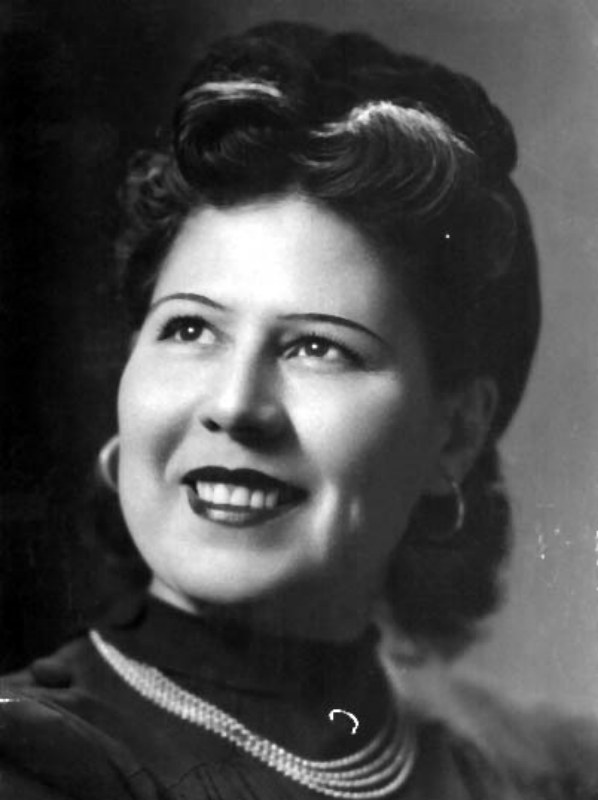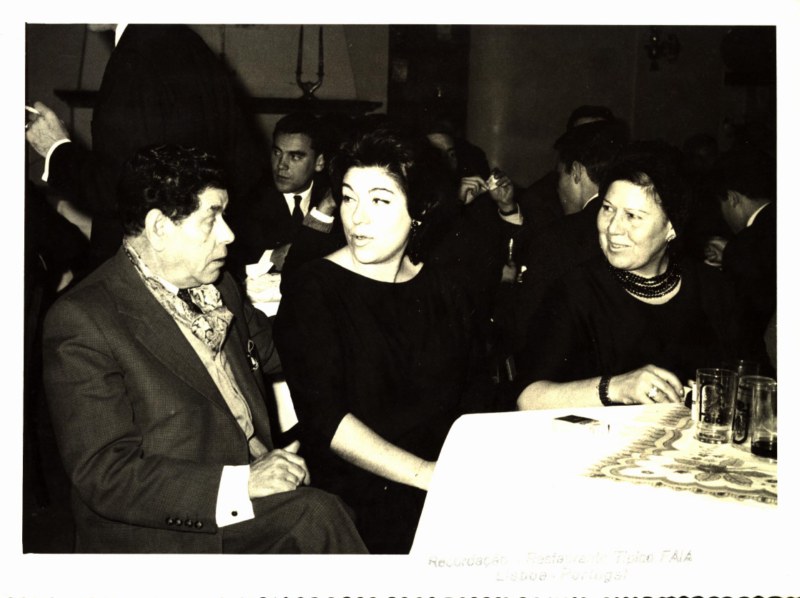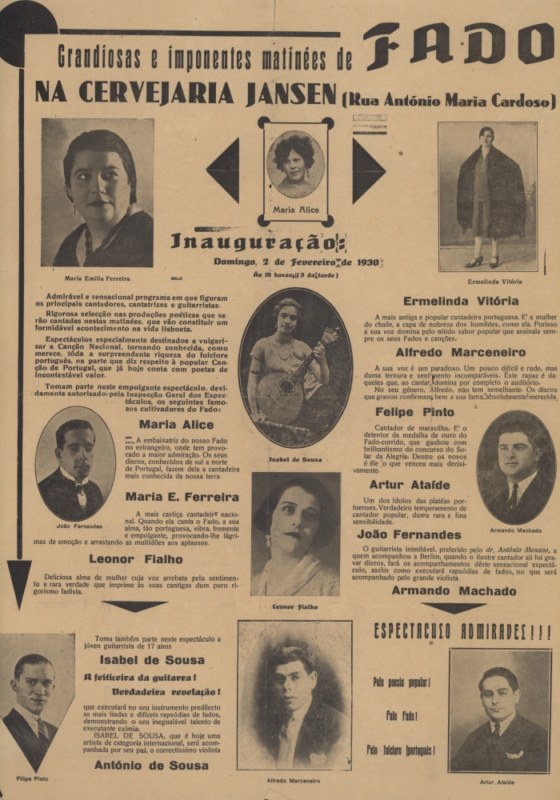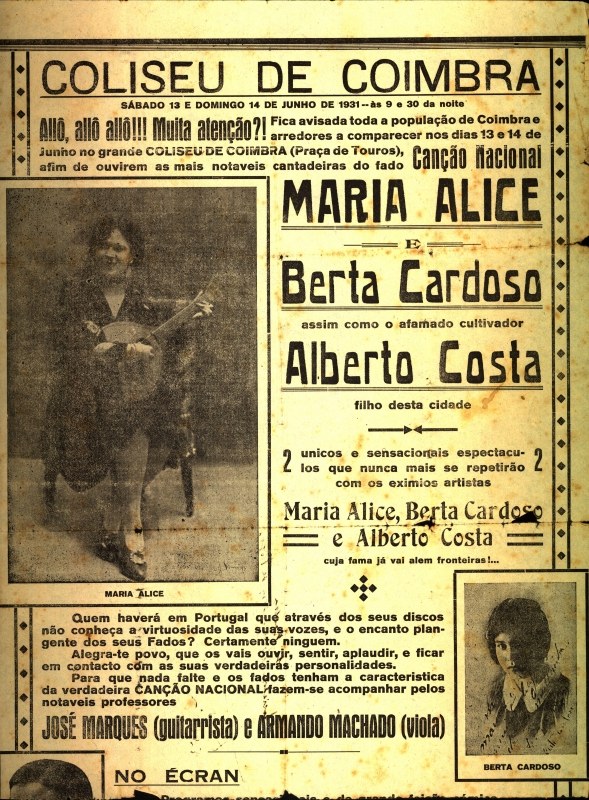Know more:
Maria Alice
(N. 1 September, 1904 - M. 13 February, 1996)Glória Mendes adopted the artistic name Maria Alice, and was born in Paião, on the 1 September 1904, although she liked to say she was from Figueira da Foz. In fact, her parents always lived in that town and had moved shortly before the child was born.
Daughter of José Leal and Maria José Mendes, little Glória was not registered with her father’s last name, which caused her a great deal of pain and made her “adopt” the surname Leal in her common signatures.
She moves out at 14 years old and comes to Lisbon with the man who would father her two children (António, 1921 and Graciete, 1923), the attorney Bernardino Morais.
By the hand of Adelina Fernandes, and with Maria do Carmo as a godmother, Glória enters the fado scene. It will be Adelina who one day, in 1928, will take her to Ferro de Engomar, and Glória, who already sang gladly at home, tries to do it in public, being very successful.
She then adopted the artistic name Maria Alice and always had work offers as a singer, both in Portugal, and Brazil – where she went twice, once during five months and becoming incredibly successful.
She sang at the houses Ferro de Engomar (where she debuted in 1928), Charquinho, Caliça and Pedralvas, at several charity events and at bullfights. In 1931 she sang in the opereta «História do Fado», by Avelino de Sousa. She performed with Leonor Fialho at Coliseu de Coimbra, on the 4 October 1931, a Sunday, accompanied by Armando and José Marques.
In 1932, she received the title “Best Singer (who coincidentally was called Maria Alice…) at a competition in Rio de Janeiro.
In 1934 she travelled to Brazil with the cast of Companhia de José Loureiro, along with Estevão Amarante, Adelina Abranches, Maria Sampaio and Lina Demoel, as well as the singer Manuel Cascais, the Portuguese guitar player Casimiro Ramos and the Spanish guitar player Armando Silva.
In 1943 she formed an artistic group, Troupe Music-Hall, along with Rui Metelo, Octávio Bramão, Mário Fernandes and Dora Vieira, with which she performed several times; that same year, the group boarded the ship Quanza to Portuguese Africa. (Cf. Canção do Sul, 16 August , 1943) One time, in Rio de Janeiro, along with Berta Cardoso and Ercília Costa, she entered a competition for the "Most Beautiful Smile", voted by the audience and won the first prize. We may say she conquered glory in the Portuguese artistic scene.
She met Valentim de Carvalho, to whom she got married in the 1940s. She then adopted her husband’s surname and completely retired from the fado life, living only for her family, at her home in Restelo. When her husband died, she moved to Hotel Internacional, where she stayed for several years. She spent her last years, a little bit more difficult and dependent, at the Home Orquídea Vermelha, in the parish of Lumiar.
To perpetuate the fado singer’s memory, the Lisbon Town Council gave her name to a street in Lisbon, located at Bairro da Cruz Vermelha. She died at 92, on the 13 February 1996.
Armando Neves wrote the lyrics she sang in "Fado Margarida":
«Tanto na vida já tenho cantado
o fado que o destino me predice
que o povo português que adora o Fado
me chama com razão Maria Alice.
Este nome é a Estrela do meu norte:
Maria Alice sou p'ra toda a gente,
Maria para a vida e para a morte
Alice para o Fado eternamente.
Maria Alice é um nome que, afinal,
contém, não sei que mágica beleza!
Maria da tristeza em Portugal,
Alice da saudade portuguesa.
Maria Alice canta, ri e chora
o fado tão antigo e sempre novo;
e se o povo a Maria Alice adora
também Maria Alice adora o povo !»
Source:
Cf. João Brás, in Canção do Sul, 16 February 1936;
“Canção do Sul”, Canção do Sul, 16 Agosto de 1943;

Maria Alice

Alfredo Marceneiro, Lucília do Carmo, Maria Alice Restaurante O Faia
-
Fado Perseguição Maria Alice (Avelino de Sousa / Carlos da Maia)

Cervejaria Jansen, 1930
